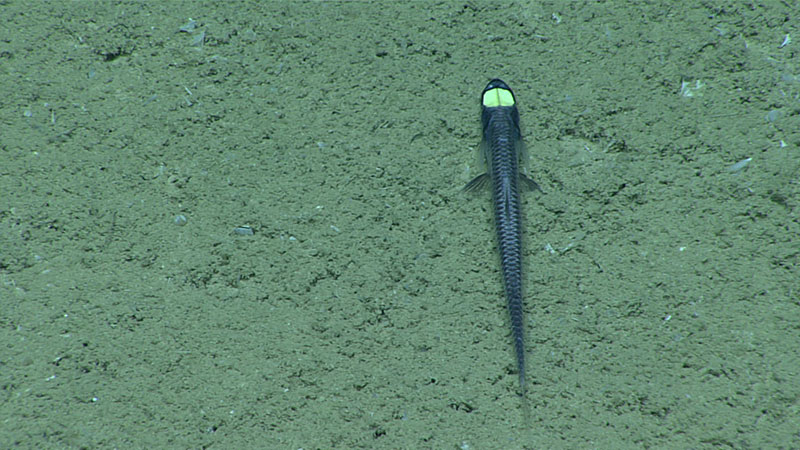Our second dive of the expedition took us relatively deep, to below 2,000 meters (6,560 feet) to explore a canyon feature southwest of Pulley Ridge along the West Florida Escarpment. During the dive, we encountered this common deep-sea fish,
Ipnops murrayi.
Ipnops is in the family with other tripod fishes (see image below), but lacks the elongated and specialized fin rays. Rather, this is the only genus in the family to have thin, bony membranes covering degenerate eyes.
Download larger version (jpg, 1.2 MB).
